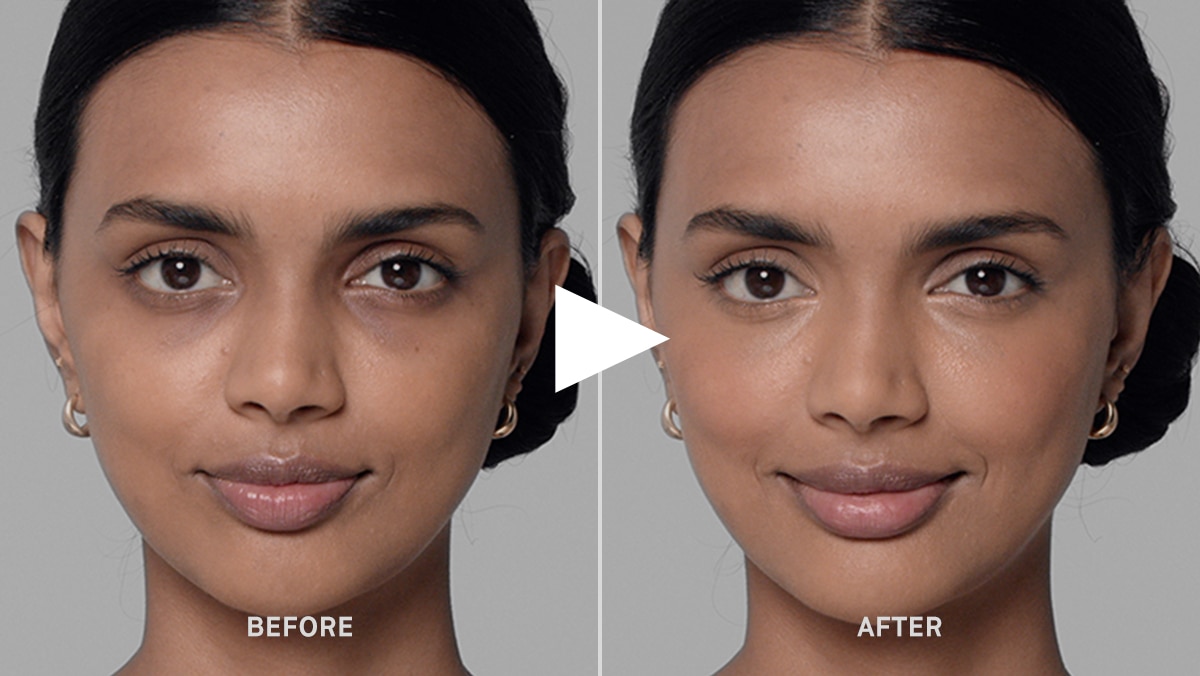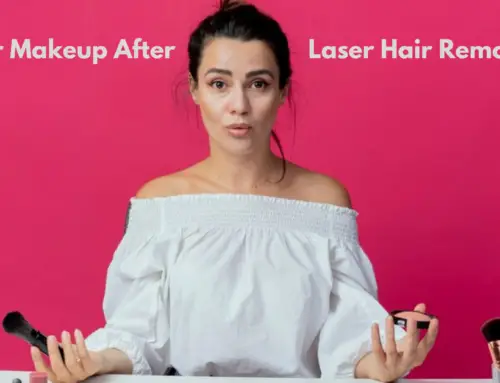As a professional in the beauty industry, I understand the struggle of dark circles and the importance of finding the right color concealer to cover them. Did you know that certain colors have specific properties that can effectively counteract the appearance of dark circles? It’s fascinating how the right shade can make all the difference in achieving a flawless complexion.
When it comes to covering dark circles, the color concealer that works best is usually peach or orange. These warm-toned concealers are ideal for neutralizing the bluish or purple undertones that are characteristic of dark circles. The peachy hues help to balance out the discoloration, providing a more even and brightened look to the under eye area. It’s important to choose a shade that is slightly lighter than your skin tone to achieve the best results. So, if you’re struggling with dark circles, give a peach or orange concealer a try, and you’ll be amazed at the difference it can make!
When it comes to covering dark circles, the key is to use a concealer that has a color opposite to the darkness on the color wheel. For dark circles, which usually have a bluish or purple undertone, opt for a peach or orange-toned concealer. These colors neutralize the dark hues and create an even base. Remember to apply the concealer sparingly and blend it well for a natural-looking result.

What Color Concealer Covers Dark Circles?
Dark circles under the eyes can make you look tired and aged. Finding the right color concealer to cover dark circles is essential for achieving a flawless complexion. But with so many options available, it can be challenging to determine which color concealer is best for addressing dark circles. In this article, we will explore the different colors of concealers and discuss which shades work best for covering dark circles.
Understanding the Color Wheel
Before we delve into the specific colors of concealers, it’s important to understand the color wheel. The color wheel is a visual representation of the relationship between different colors. It consists of primary colors (red, blue, and yellow), secondary colors (orange, green, and purple), and tertiary colors (red-orange, yellow-orange, yellow-green, blue-green, blue-purple, and red-purple).
When it comes to concealing dark circles, we need to look at complementary colors on the color wheel. Complementary colors are opposite each other on the wheel, and when mixed together, they neutralize each other. This means that using a concealer with a complementary color to your specific dark circle color can effectively camouflage it.
Different Colored Concealers for Dark Circles
1. Peach or Salmon Concealer
Peach or salmon concealers are ideal for covering dark circles with a bluish or purple undertone. These shades help counteract the cool tones in the dark circles, brightening the under-eye area. Peach or salmon concealers work particularly well on fair to medium skin tones.
2. Yellow or Golden Concealer
Yellow or golden concealers are great for neutralizing dark circles with a brown or gray undertone. These shades help to cancel out any blue or purple pigmentation, giving the under-eye area a more even-toned appearance. Yellow or golden concealers are suitable for all skin tones.
3. Green Concealer
If your dark circles have a red undertone, using a green concealer can help counteract the redness. Green is opposite red on the color wheel, making it an effective color corrector for redness. Apply a small amount of green concealer to the areas with red undertones, blend it out, and then follow up with your regular concealer to achieve a natural-looking finish.
4. Lavender Concealer
Lavender concealers are best suited for dark circles with a yellow undertone. The cool-toned lavender color helps balance out the yellow pigmentation, giving a more balanced and bright appearance to the under-eye area. However, it’s important to use lavender concealer sparingly as too much can make the skin look ashy.
5. Neutral Concealer
If you have dark circles that are not heavily pigmented or don’t have a specific undertone, a neutral concealer that matches your skin tone can work well. Neutral concealers help brighten the under-eye area without adding any additional color correction. They provide a more natural and subtle coverage, suitable for everyday wear.
Tips for Choosing the Right Color Concealer
When selecting a color concealer to cover dark circles, keep the following tips in mind:
- Identify the undertone of your dark circles (cool, warm, or neutral).
- Refer to the color wheel to choose a concealer color that is opposite to your dark circle undertone.
- Test the concealer on your jawline to ensure it blends seamlessly with your skin.
- Choose a concealer that matches your skin tone for a more natural look, or a slightly lighter shade to brighten the under-eye area.
- Consider the coverage and consistency of the concealer based on your personal preference.
In Summary
Choosing the right color concealer to cover dark circles can make a significant difference in achieving a flawless complexion. Peach or salmon concealers work best for bluish or purple undertones, while yellow or golden concealers are ideal for brown or gray undertones. Green concealers help neutralize redness, and lavender concealers balance out yellow undertones. Neutral concealers are suitable when there is no specific undertone or for everyday wear. Remember to test the concealer color on your skin and consider your undertone to find the best match.
Key Takeaways
- A peach or salmon-colored concealer can effectively cover dark circles.
- Green or yellow concealer can be used to neutralize redness around the eyes.
- Choose a concealer shade that is one to two shades lighter than your skin tone.
- Blend the concealer well into your skin using your finger or a brush.
- Set the concealer with a translucent powder to ensure long-lasting coverage.
Frequently Asked Questions
Dark circles can be a common concern for many people, and finding the right color of concealer to cover them up can make all the difference. Here are some frequently asked questions about what color concealer covers dark circles, along with their answers.
1. Which color concealer is best for covering dark circles?
The best color concealer to cover dark circles depends on the undertone of your dark circles. For those with blue or purple undertones, a peach or orange-toned concealer can help neutralize the discoloration. If your dark circles have more of a brown or green undertone, a yellow or golden-toned concealer may work better. It’s important to choose a shade that is slightly lighter than your foundation for a natural look.
When applying the concealer, gently pat it onto the dark circles using your ring finger or a small brush, blending it outwards to create a seamless transition with your foundation. Set it with a translucent powder to ensure it stays in place throughout the day.
2. Can I use a color corrector instead of a concealer to cover dark circles?
Absolutely! Color correctors are specifically designed to target and neutralize different undertones of discoloration, including dark circles. Depending on your dark circle undertones, you can use a peach, orange, or yellow color corrector before applying your regular concealer. Color correctors should be applied sparingly, focusing only on the areas with discoloration, and blended well with a brush or your fingers.
After applying the color corrector, follow up with a concealer that matches your skin tone to achieve a seamless finish. Remember to set the concealer with a light dusting of powder for long-lasting coverage.
3. What if I have fair or light skin? Which color concealer should I use?
If you have fair or light skin, a light peach or salmon-toned concealer is generally recommended for covering dark circles. These shades work well to counteract the bluish or purplish undertones commonly found in fair skin. Avoid using a concealer that is too light, as it can create a stark contrast and draw attention to the under-eye area.
Remember to always test the concealer on your skin before purchasing to ensure it matches your skin tone and blends seamlessly with your foundation. Different brands may have variations in shade names, so it’s best to experiment and find the shade that suits you best.
4. Can I use a green concealer to cover dark circles?
While green concealer is commonly used to neutralize redness on the skin, it may not be the best choice for covering dark circles. Dark circles typically have blue, purple, brown, or green undertones, and using a green concealer alone may not effectively hide these colors. It’s best to opt for a color corrector or concealer that is specifically formulated for dark circles and matches the undertones you wish to correct.
Experiment with different colors and shades to find the one that works best for your specific dark circles, and remember to blend well for a natural-looking finish.
5. Is it necessary to use a concealer primer before applying concealer for dark circles?
Using a concealer primer can help create a smooth canvas for your concealer application and improve its longevity. A primer can also fill in fine lines and wrinkles, creating a smoother appearance. However, if you don’t have a concealer primer, you can still achieve good results by moisturizing the under-eye area before applying concealer.
Make sure to gently pat the concealer onto the moisturized skin for a seamless blend. Setting the concealer with a powder can also help prolong its wear and prevent creasing.

When it comes to covering dark circles, the right color concealer makes all the difference. For light to medium skin tones, a peach-colored concealer works best. It helps counteract the bluish undertones of dark circles.
If you have a deeper skin tone, opt for a concealer with a more orange or red hue. These shades can effectively neutralize dark circles and create a brighter and more even-toned under eye area.






Leave A Comment